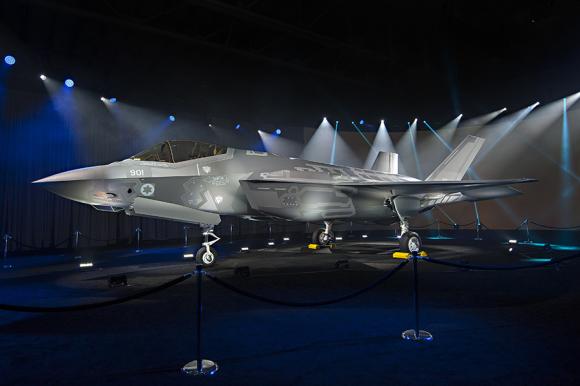The new training center for Israeli F-35s will be at Nevatim Air Base in the Negev. Lockheed Martin announced that it has selected Elbit Systems for the implementation of the simulators. The latter provides outsourcing services for the F-15 / F-16 air force at the Hatzor base. Finally, Elbit Systems is a world leader in the high-tech display sector.
Over the 50% of the training will take place on advanced simulators. This will reduce the cost of training pilots who will fly on the F-35. Lockheed Martin will manage the new training center: the final agreement between the two companies will be ratified in the coming months. Finally, the training center will be completed next year.
Lockheed Martin built 200 F-35s. The fleet has accumulated more than 73.000 flight hours. Over 350 pilots enabled.
Israel's acquisition program includes 33 F-35A Conventional Take Off and Landing, or CTOLs, purchased through the Foreign Military Sales (FMS) program. Israel contributes to the F-35 program with the production of semi-wings for the F-35A by IAI - Israel Aerospace Industries, the contribution of Elbit Systems Ltd. to the Generation III Helmet-Mounted Display helmet which will be used by pilots of the 'F-35 around the world and with the production of composite components for the central part of the fuselage of the F-35 by Elbit Systems-Cyclone.
Following the declaration of combat-ready Initial Operational Capability (IOC) for the Marine Corps and Aviation, the US Navy expects to reach this milestone in the course of 2018.
The point about Israel's F-35s
Israel will receive the first two F-35 Ha-Adir by next December at Nevatim air base in the Negev. The first squadron consisting of 19 aircraft will be operational with the Israeli Air Force in 2019. Each Ha-Adir will cost $ 110 million.
But it is the expected and inevitable heavy maintenance of the cells by the Israelis that Lockheed Martin is perplexed. Suffice it to say that the Israeli F-15s and F-16s are considered the most powerful on the planet due to the heavy changes made compared to their original design.
We know that Lockheed Martin is already working to meet a particular need of the Israeli Ministry of Defense: to extend the range of the F-35 by at least 30%. The Israeli F-35, as was the case with the F-15 and F16, will be a different fighter than those Lockheed Martin will deliver to the JSF program partners. It will undoubtedly be characterized by advanced systems and, among these, a greater range of action.
The exact nature of the alterations (external and internal) is not clear, but some of these will have to be written in the precious source code, jealously guarded by the USA. Israel itself would have been able to implement the new features without requiring US assistance. It will be an exception for the ally in the Middle East, which will never be allowed to other partners.
The IAF has already requested specific additional tanks. It means that the Israelis want more than just a standard tank. The integration must not affect the profile of the fighter and its stealth characteristics. Israel may be interested in extending the JSF's range to reduce airborne refueling on long-range missions. It should be noted that in the past Lockheed Martin produced a special version of the F-16 fighter, precisely with additional tanks, for the Israeli air forces.
The current range of an F-35 is approximately 1150 km. If the Israeli F-35 increases its flight range by 30%, it could hit Iranian targets. However, even with this increased capacity, the fighter would always need a refueling in flight, considering that the Iranian targets are at a minimum distance of at least 1000 km.
However, the gap between F-35 of A-series and B-series continues to become increasingly evident. If it is true on the one hand that the F-35 will receive all the integrations up to the 2040, on the other it will already be available important modifications (such as a new engine, system avionics and more powerful radar) from the 2020 that can be purchased at discretion of the countries that will decide to keep it in step with the times.
The $ 2,82 billion deal, including aircraft maintenance and staff training, was signed last February after being approved by a ministerial committee on December 35. The first squadron consisting of nineteen F-2019s will be operational in the Israeli Air Force at the beginning of XNUMX, while the desire to purchase a second lot for the creation of a second squadron has already been confirmed.












